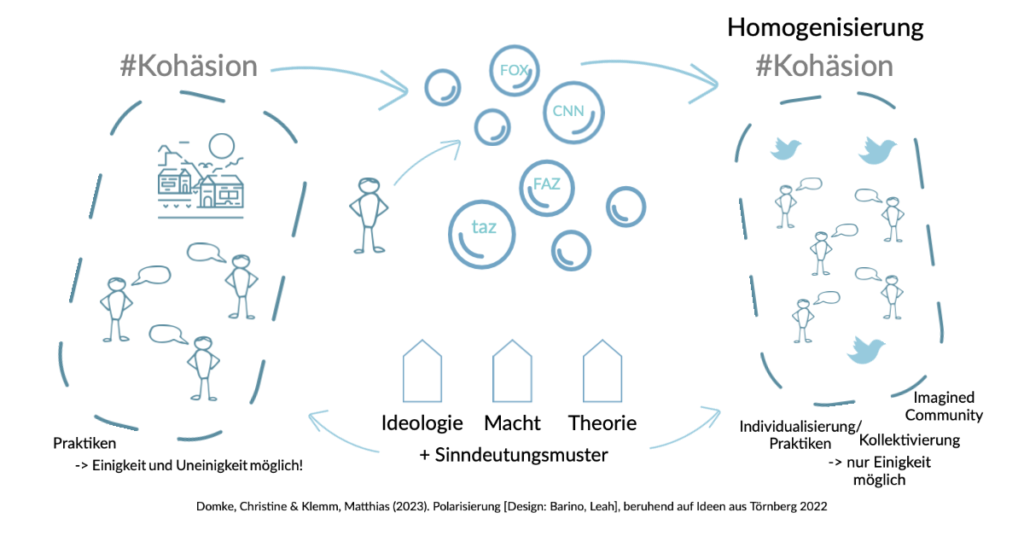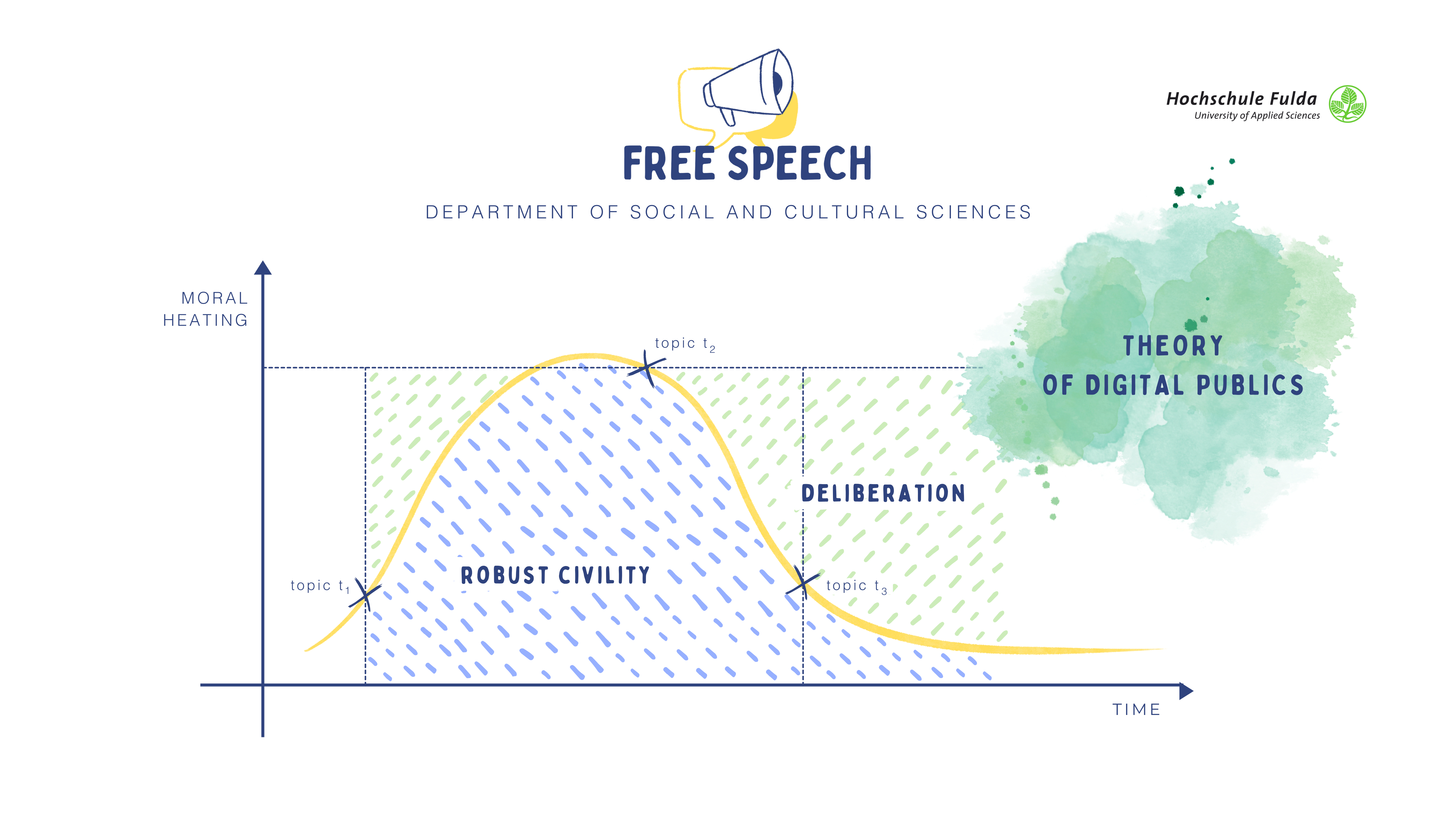In the age of digitalization, polarization presents itself as a growing challenge to modern society. Polarization as a scientific concept denotes “a process whereby the normal multiplicity of differences in a society increasingly align along a single dimension and people increasingly perceive and describe politics and society in terms of ‘Us’ versus ‘Them’”[1]. Quite often, polarization is linked “with a variety of dangerous symptoms that pose a threat to the healthy functioning of democratic societies” as a result of “a loss of diversity of opinions and arguments”[2].
Rising levels of polarization are often associated with the expansion of social media throughout the world. It is assumed that on social media, individuals are increasingly locked in into digital “echo-chambers” which are “environments in which the opinion, political leaning, or belief of users about a topic gets reinforced due to repeated interactions with peers or sources having similar tendencies and attitudes”[3]. Concepts such as “selective exposure” or “confirmation bias” (individuals tending to look for information that reinforce their respective opinions) are developed in order to describe or explain the function of those echo chambers[4].
While this has been the dominant theory explaining increasing levels of polarization, recent research has been questioning this approach. Törnberg argues that “it is not isolation from opposing views that drives polarization but precisely the fact that digital media bring us to interact outside our local bubble”[5]. The following figure takes up Törnberg’s approach and tries to visualize and enhance it adding our own considerations.

As a starting point, individuals and their respective communities are influenced by three strands: ideology, power, and theory. Together with patterns of interpretations of meaning, these form the basis of individual and collective opinions and values.
The left side symbolizes interactions within a more traditional regional community. Although it is well known that neither villages nor larger cities could ever be seen as homogenous entities everyday activities lead and still leads to overlapping zones of interaction of the heterogenous population. In Törnberg’s argument this connecting practices are able to bridge and encapsulate the fact that the interacting individuals and groups often hold opposing views and schemes of interpretation. As a result, agreement and disagreement are possible without disruption in most cases.
With the rise of social media and digitalization, the individual is now drawn into interactions outside its local life world and is, thus, confronted with opposing views of people with whom it does not share a common communal cooperative infrastructure. As there is less shared space, people and opinions are no longer differentiated and we experience growing levels of polarization between competing opinions. Within these respective digitally structured in-groups, people form imagined communities in which only agreement is possible.
Overall, the figure aims at explaining growing levels of polarization in the age of digitalization. Instead of adhering to the prevalent theory of “selective exposure” and “echo-chambers”, this approach focuses on the lack of shared practices within the digital sphere. Instead, agreement in opinion forms the common ground, whereas the agreements are built against outside held opinions, i.e. in a constant confrontation with opposing positions. Polarization is, thus, not a result of selective exposure as such but rather a consequence of a new digital sphere which supersedes the necessity to form local ties with other individuals who hold opposing opinions but are still part of the everyday life world.
[1] McCoy, J., Rahman, T., & Somer, M. (2018). Polarization and the global crisis of democracy: Common patterns, dynamics, and pernicious consequences for democratic polities. American Behavioral Scientist, 62(1), 16-42, p. 16.
[2] Spohr, D. (2017). Fake news and ideological polarization: Filter bubbles and selective exposure on social media. Business information review, 34(3), 150-160, p. 151
[3] Cinelli, M., De Francisci Morales, G., Galeazzi, A., Quattrociocchi, W., & Starnini, M. (2021). The echo chamber effect on social media. PNAS Sciences, vol. 118, no. 9, p. 1.
[4] Ibid.
[5] Törnberg, Petter. (2022). „How digital media drive affective polarization through partisan sorting.” PNAS, vol. 119, no. 42, p. 1. DOI: 10.1073/pnas.2207159119
